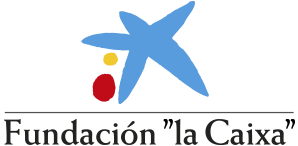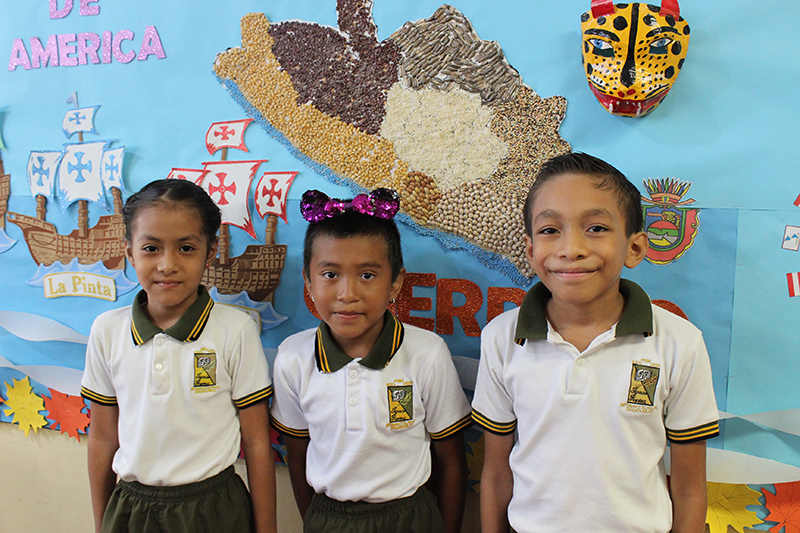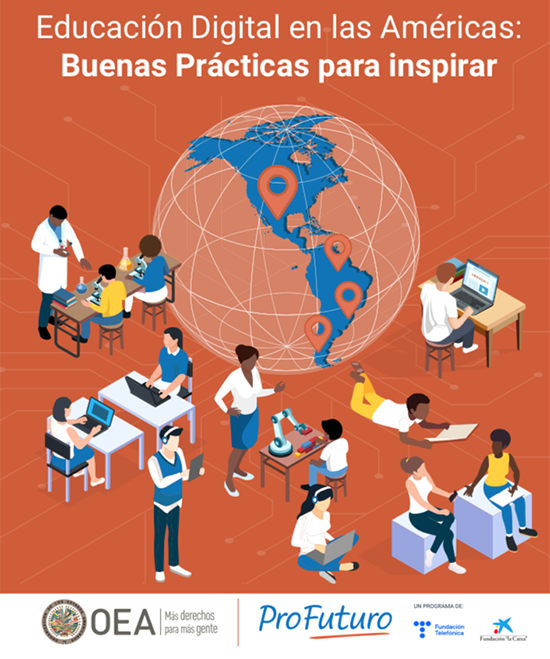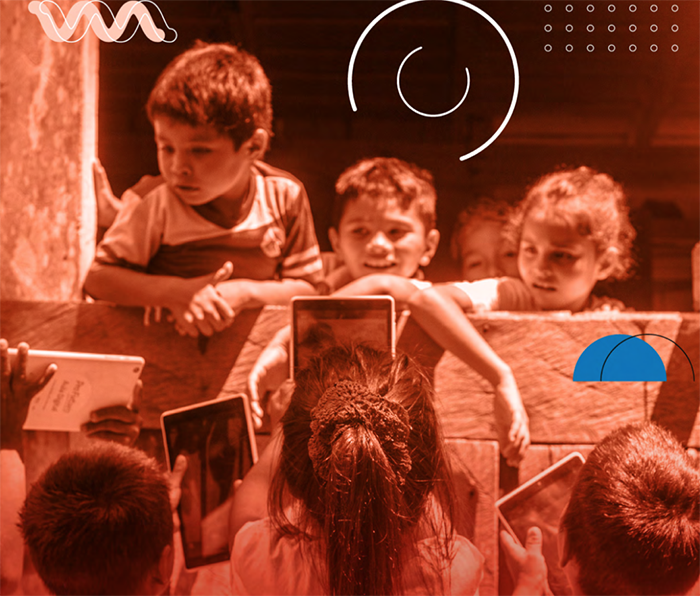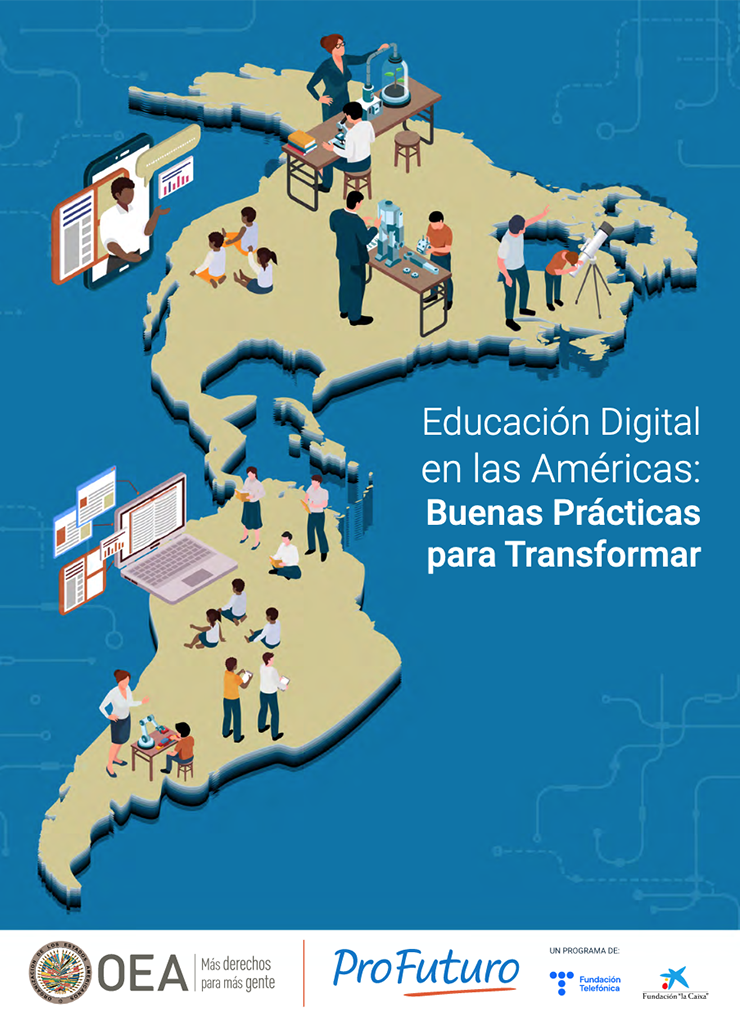
In Latin America, talking about digital education doesn’t always mean talking about the future. Unfortunately, it often means talking about inequality, unstable connections, schools with limited resources, and teachers doing a lot with very little. And yet, it also means talking about ingenuity, commitment and innovation—qualities that, let’s be honest, rarely make the headlines.
To help change this narrative, the Organisation of American States (OAS) and the ProFuturo Foundation launched the Second Mapping of Good Practices in Digital Education in the Americas. The call for submissions gathered 179 initiatives from 17 countries, with a clear goal: to identify, document and share educational initiatives that are using technology in pedagogically meaningful and transformative ways.
This article highlights a selection of those experiences. They are not the only valuable ones, but they do represent the geographical, institutional and methodological diversity of the broader group. Some originate in rural schools, others in medium-sized cities, and others still in civil society organisations that fill the gaps left by the system. What they all share is a simple premise—one we never tire of repeating at this Observatory: technology, when well understood, can be a tool for inclusion, equity, and lasting learning.
Telling these stories is a way to acknowledge and give credit. But it’s also a way to inspire and to show that it can be done. That there are many possible paths.
Diversity of Contexts and Purposes
The map resulting from this second edition follows no single pattern. And that, in itself, is already a noteworthy finding. The 179 documented initiatives are set in contexts as diverse as a multigrade rural school in the Colombian Andes, a nursery in Buenos Aires, or a programme for older adults in urban areas of Mexico. The majority (54%) of these initiatives are based in urban settings; 33% operate in both urban and rural areas, and just 13% are rooted exclusively in rural regions.
Most initiatives target secondary (52%) and primary (41%) education, though there are also cases involving early childhood education or operating entirely outside the formal school system. Not all originate in schools: civil society organisations play a significant role, particularly in projects aimed at marginalised communities, digital literacy or digital citizenship.
The objectives are varied, though some common themes emerge: the development of digital skills (65%) is the most frequently cited goal, followed by curriculum enrichment (61%), inclusive and equitable education (57.5%), teacher training (38.5%), and personalised learning (also 38.5%). It is not uncommon for a single practice to pursue three or four of these aims simultaneously.
As we shall see, the lack of technical resources is more than compensated for by creativity—creativity that, applied to specific problems and turning necessity into virtue, is the hallmark of these good practices.
The initiatives featured in this article reflect that diversity well: different geographies, different goals, the same commitment to ensuring that technology adds value rather than replaces. Let’s explore.
STEAM Without Barriers – Colombia
In rural schools in Sabanalarga, Atlántico, this project brings STEAM technologies into the classroom with an inclusive approach, focusing on students with disabilities. It uses open-source software, robotics kits, and participatory methodologies to adapt content and devices to pupils’ needs. It has also strengthened teacher training in accessibility and universal design. More than 200 students have actively taken part in this initiative.
Why is it a good practice?
- Equity: addresses the inclusion of students with disabilities in rural settings.
- Systematisation: provides adapted teaching materials and implementation protocols.
- Replicability: can be scaled in similar contexts using accessible tools like Arduino or Scratch.
Digital Seed – Colombia
Implemented by Fundación PLAN, this project works with indigenous communities in Cauca to integrate digital tools into culturally relevant educational processes. It relies on tablets, content production in native languages, and offline platforms adapted to areas without connectivity. The intercultural approach is enhanced by teacher training and community participation. It has reached over 30 rural institutions.
Why is it a good practice?
- Equity: brings visibility to and strengthens indigenous languages and cultures.
- Systematisation: includes multilingual teaching guides and a community-based model.
- Replicability: adaptable to other indigenous or rural communities with a cultural relevance approach.
We Learn Together with EDUCA SM TV – Peru
Created by the Peruvian Ministry of Education (MINEDU) and Educa SM TV, this television education project was launched during the pandemic. It offers curriculum-aligned programming for primary and secondary students without internet access, especially in rural areas. With more than 1,500 episodes broadcast, it has become a lasting complementary strategy beyond the emergency.
Why is it a good practice?
- Equity: reaches disconnected students in poverty or geographically isolated areas.
- Systematisation: all content is archived, sequenced and aligned to the curriculum.
- Replicability: can be adopted by other countries or regions using public broadcasting.
Digital Citizenship and Rights for Older Adults – Mexico
Led by the National Autonomous University of Mexico (UNAM), this project offers digital literacy workshops to older adults in urban areas. It adopts a rights-based approach, promoting safe and conscious use of technology—from browsing the internet to identifying fake news and protecting personal data. Sessions are held in person, with intergenerational support and adapted materials.
Why is it a good practice?
- Equity: supports a population often excluded from digitalisation processes.
- Systematisation: features training modules, practical guides and materials designed for older adults.
- Replicability: transferable to any city with basic computer access and institutional support.
Engineering a Future – Mexico
This project promotes learning in 3D design, robotics and digital prototyping among young people from vulnerable backgrounds in Mexico City. It operates in partnership with community centres and public schools. Beyond technical skills, it encourages creative and entrepreneurial thinking. Participants design and build functional objects that impact their communities.
Why is it a good practice?
- Equity: targets socially at-risk youth, expanding their opportunities.
- Systematisation: documents design processes, learning outcomes, and final products.
- Replicability: adaptable to other urban areas with access to 3D printers or community labs.
Teachers with Digital Leadership – Andean Region and Southern Cone
A regional initiative by the ProFuturo Foundation aimed at strengthening teachers’ digital competencies. Through a virtual platform, it offers structured training, educational resources and peer support. The focus is on the pedagogical use of technology, with tailored learning paths based on experience level and context. Participants include teachers from Bolivia, Ecuador, Argentina and Paraguay.
Why is it a good practice?
- Equity: democratises access to continuous professional development in areas with stark territorial inequalities.
- Systematisation: includes training paths, self-assessments and peer collaboration spaces.
- Replicability: the platform is scalable and easily implemented in other countries with minimal adjustments.
STEAM Zone – Mexico
A programme run by the Jalisco Ministry of Education, STEAM Zone provides mobile laboratories with robotics kits, 3D printing, and coding tools to public schools. It combines digital skills development with local problem-solving, using active methodologies like project-based learning. It has been implemented in hundreds of schools, especially at the secondary level.
Why is it a good practice?
- Equity: delivers advanced technology to public schools lacking their own resources.
- Systematisation: includes curricular guides, teacher training and project documentation.
- Replicability: can be extended to other regions with institutional backing and basic equipment.
Art and Technology Labs – Argentina
Part of the Seguimos Educando programme, this initiative sets up school labs combining artistic expression and digital tools: from stop-motion and sound editing to interactive installations. Designed for primary and secondary schools, the workshops foster creativity, critical thinking and collaborative work. They’re implemented in both urban and rural settings with high teacher autonomy.
Why is it a good practice?
- Equity: broadens access to tech-mediated artistic expression in schools without a digital tradition.
- Systematisation: offers activity plans, resources and audiovisual documentation.
- Replicability: flexible and adaptable with minimal resources in any school context.
Climate and Earth Explorers – Peru
This proposal integrates environmental science, technology and citizenship education for primary and secondary students in rural areas of Cusco. Pupils observe natural phenomena, collect data, and use mobile devices and basic sensors to build knowledge about their environment. The experience connects ancestral knowledge with digital tools to foster local climate awareness.
Why is it a good practice?
- Equity: values local knowledge and links it to the school curriculum.
- Systematisation: includes journals, teaching materials and community-based resources.
- Replicability: well suited to other rural areas with a strong relationship to nature.
Digital Reading Adventure – Peru
Digital Reading Adventure is a strategy to improve reading comprehension through digital platforms, interactive stories and oral storytelling. Implemented in rural and peri-urban primary schools, it boosts motivation through play, family involvement and simple technologies. It includes teacher training and progress monitoring.
Why is it a good practice?
- Equity: supports students with low reading performance in vulnerable contexts.
- Systematisation: includes digital resources, teacher guides and evaluation tools.
- Replicability: easily reproduced in other settings using free platforms and training support.
The Second Mapping of Good Practices in Digital Education in the Americas is a broad snapshot of what teachers, schools and communities are doing with what they have: adapting, creating, sharing, persisting.
Keys to Success and Sustainability
A good practice doesn’t emerge from a brilliant idea alone: it needs the right conditions to grow, spread, and last beyond a few months. From the ten experiences selected in this article, we can identify some common ingredients that matter more than any new technology.
The first is contextualisation. None of these initiatives were imposed from outside: they all stem from specific needs identified by teachers, communities or organisations that understand their local realities. That alignment ensures that resources—often limited—are used effectively.
Active participation is another constant. Students, families and teachers are not passive users of technology, but key players in the transformation. Their ownership of the process ensures that innovation doesn’t depend on one person or disappear with a change in administration.
Most of the practices involve some level of systematisation—in the form of guides, documentation or open platforms. This allows others to learn from the experience, share it, and adapt it.
Replicability depends largely on creativity in the face of limitations: many initiatives show that you don’t need high-end tech to make an impact—just well-thought-out pedagogy and long-term commitment.
Yet challenges remain: unstable funding, the need for ongoing teacher training, and, above all, the necessity for institutional environments that support rather than stifle innovation. Because one good practice alone can’t change the system. But it can point the way.
Ten Ways to Remember That Innovation Is Possible
Talking about digital education in Latin America is, more often than not, talking about unfinished business—about unfulfilled tech promises. But these ten stories, like all those in the mapping, remind us that innovation is already happening, even if not in the most visible places.
The Second Mapping of Good Practices in Digital Education in the Americas is a broad snapshot of what teachers, schools and communities are doing with what they have: adapting, creating, sharing, persisting.
Each of these practices shows that educational transformation does not rely solely on budgets or the latest tech, but on purposeful pedagogy, sustained by partnerships and committed networks.
Exploring the full report is also a way to broaden our horizons. For policy-makers, classroom educators, and anyone who believes that better education is possible—even in tough conditions—the report offers ideas, materials and proven pathways.
You can access the report and the interactive map of all experiences here:
👉 https://portal.educoas.org/es/redes/bbpp/explora


